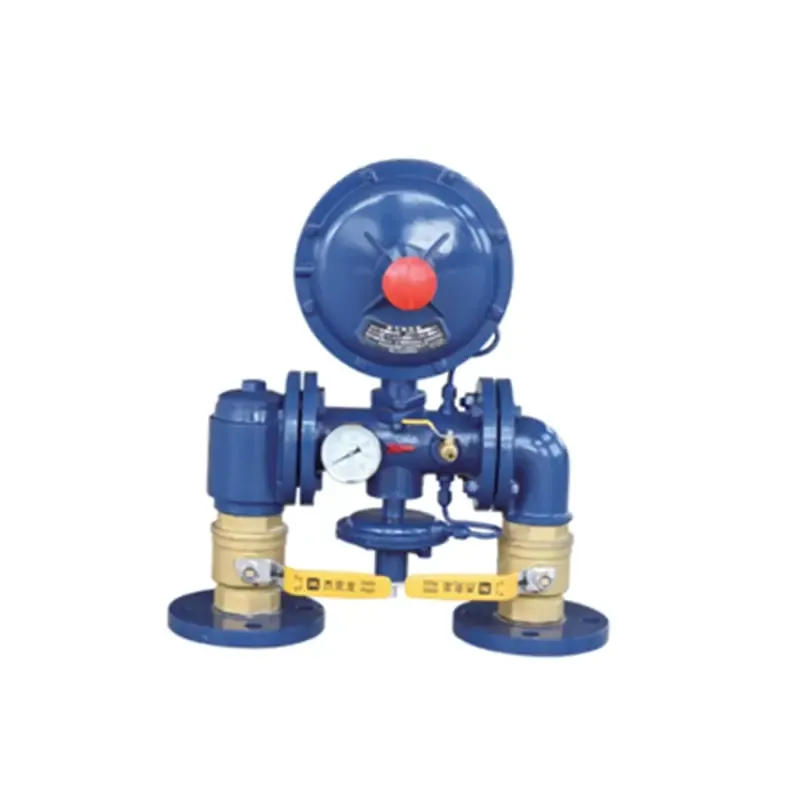
Aug . 21, 2024 00:50
Back to list
Understanding Safety Relief Valves for Pressure Regulation and System Protection
Safety Relief Valves Ensuring System Integrity and Operational Safety
Safety relief valves (SRVs) are critical components in various industrial processes, designed to protect equipment and personnel from unexpected pressure surges. These devices act as pressure relief mechanisms, releasing excess pressure from a system to prevent catastrophic failures and maintain operational safety. Understanding the function, types, and importance of safety relief valves is essential for anyone involved in industrial operations.
At its core, a safety relief valve is a mechanical device that automatically opens to release pressure when it reaches a predetermined threshold, subsequently closing to prevent further discharge. This process ensures that the pressure within a system remains within safe operating limits. Without effective pressure control, equipment can suffer severe damage, potentially leading to leaks, explosions, and even loss of life. Therefore, SRVs play a crucial role in maintaining system integrity.
There are two primary types of safety relief valves spring-loaded valves and pilot-operated valves. Spring-loaded valves are the most common and operate based on a spring mechanism. When the pressure in the system exceeds the spring's force, the valve opens, allowing gas or liquid to escape. As the pressure drops back below the set point, a spring retracts the valve to its closed position. On the other hand, pilot-operated valves use a small pilot valve that regulates the opening of the main valve, allowing for more precise control and the ability to handle higher flow rates. These distinctions highlight the importance of selecting the appropriate type of valve based on specific system requirements.
safety relief valve

The importance of safety relief valves cannot be understated. Industries such as oil and gas, chemical manufacturing, and power generation are particularly reliant on these devices to prevent accidents. Regulatory agencies mandate the installation of SRVs in high-pressure systems to comply with safety standards. Regular maintenance and testing of safety relief valves are equally crucial, as any malfunction could lead to dire consequences. Operators must ensure these valves are inspected periodically, lubricated, and tested to ensure they function correctly when needed.
Moreover, the correct sizing of safety relief valves is vital for effective performance. An undersized valve may not relieve enough pressure, while an oversized valve may lead to unnecessary discharges, impacting the efficiency of the system. Engineers rely on calculations and industry standards to determine the appropriate size and type of relief valve for each application.
In addition to traditional applications, emerging technologies are also influencing the design and function of safety relief valves. Innovations in materials and automated monitoring systems are enhancing the reliability and efficiency of these devices. IoT (Internet of Things) integration allows for real-time monitoring of system pressures, enabling predictive maintenance and immediate alerts if a valve begins to fail. Such advancements are essential in the continuous pursuit of operational safety and efficiency.
In conclusion, safety relief valves are indispensable components in maintaining the safety and integrity of industrial systems. Their ability to prevent dangerous pressure build-ups protects not only equipment but also the well-being of operators and the surrounding community. As industries evolve and technology advances, the ongoing development of safety relief valve technology will remain crucial in meeting the demands of modern operations and regulatory requirements. By prioritizing the implementation, maintenance, and monitoring of these critical devices, organizations can mitigate risks and enhance safety standards across their operations.
Latest news
-
Safety Valve Spring-Loaded Design Overpressure ProtectionNewsJul.25,2025
-
Precision Voltage Regulator AC5 Accuracy Grade PerformanceNewsJul.25,2025
-
Natural Gas Pressure Regulating Skid Industrial Pipeline ApplicationsNewsJul.25,2025
-
Natural Gas Filter Stainless Steel Mesh Element DesignNewsJul.25,2025
-
Gas Pressure Regulator Valve Direct-Acting Spring-Loaded DesignNewsJul.25,2025
-
Decompression Equipment Multi-Stage Heat Exchange System DesignNewsJul.25,2025

